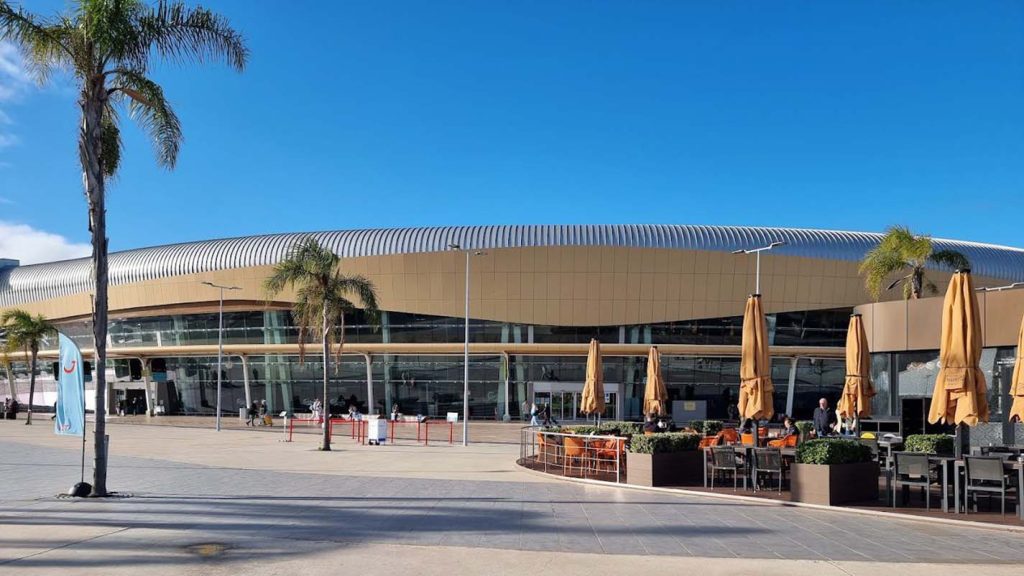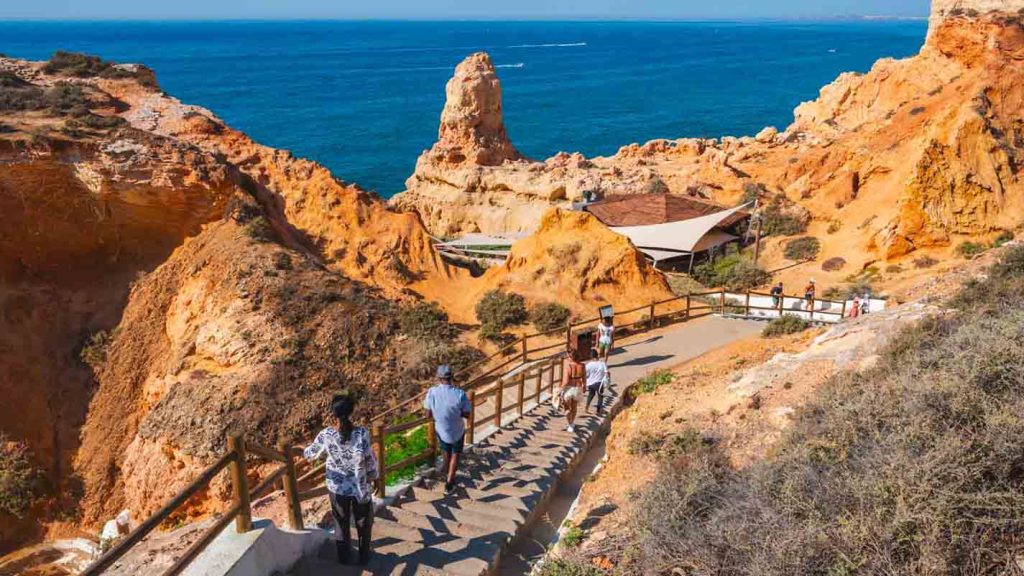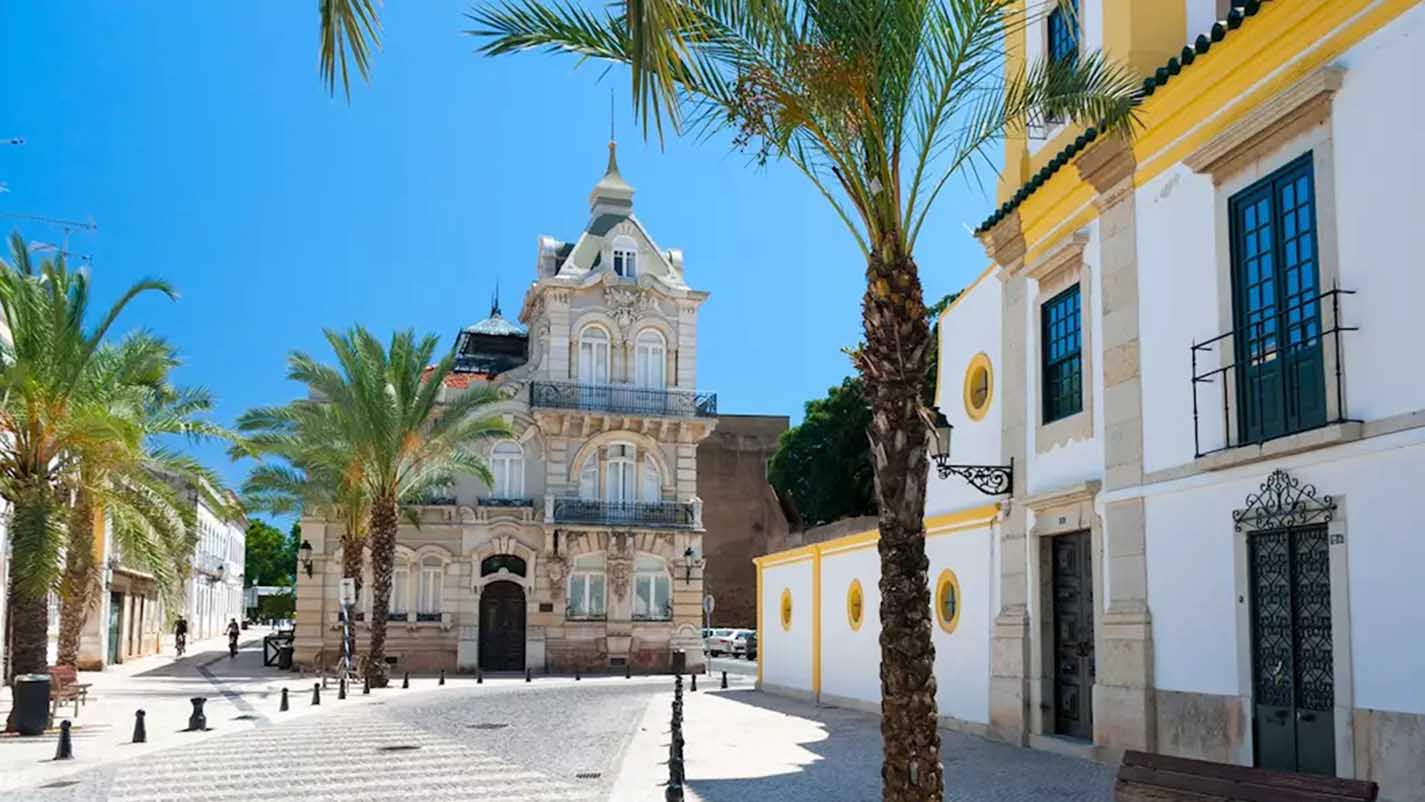The Algarve, Portugal’s southernmost region, is a destination that has captured the imagination of travelers for decades. Known for its golden beaches, limestone cliffs, charming fishing towns, and relaxed pace of life, it is a place that feels both timeless and ever-evolving. For many first-time visitors, the question isn’t whether to visit the Algarve, but rather how to get there and, once you arrive, how to navigate the region with ease.
Transportation plays a key role in shaping your Algarve experience. From the very first moment of arrival, whether by plane, train, or car, your choice of transport influences how freely you can explore the coastline, the quaint inland villages, and the cultural gems tucked away beyond the beaches. This guide covers everything you need to know about getting to the Algarve and moving around once you are there—designed to help you plan a seamless, stress-free trip.
Getting to the Algarve
1. By Air: Faro International Airport
The main gateway to the Algarve is Faro International Airport (FAO). Conveniently located near the city of Faro, the airport connects the region with a wide range of European cities. For many travelers, Faro is the most practical entry point, saving hours of transit compared to flying into Lisbon or Porto.
At the airport, you’ll find car rental desks, shuttle services, taxis, and even buses that can take you into Faro or connect you to other Algarve towns. One of the advantages of flying directly into Faro is the speed with which you can transition from plane to beach. Within 30 minutes of landing, you could be sipping coffee in Faro’s historic old town or dipping your toes in the Atlantic.
Tips for arrival at Faro Airport:
- Pre-book car rentals during peak season to avoid long waits.
- Consider private transfers if you’re traveling with family or heavy luggage.
- The airport is compact, so navigating arrivals and baggage claim is generally straightforward.

2. By Train: Lisbon to the Algarve
If you’re flying into Lisbon or starting your journey elsewhere in Portugal, the train network is an excellent way to reach the Algarve. The Portuguese railway service (Comboios de Portugal, or CP) operates comfortable intercity trains between Lisbon and Faro, Lagos, or Portimão.
The trip from Lisbon’s Entrecampos or Oriente stations to Faro takes around 3.5 hours. First-class tickets are relatively affordable, with wide seats and quiet carriages. The train journey itself offers a scenic transition, carrying you past rolling hills, farmland, and eventually the salt flats that signal your arrival in the Algarve.
Advantages of train travel:
- Relaxed, no need to worry about driving.
- Reliable schedules with multiple departures daily.
- Affordable, even for families or groups.
However, once you arrive at the Faro train station—or other Algarve train stops—you may still need local transportation, as the train line only serves a limited number of towns along the coast.
3. By Bus: Affordable Long-Distance Travel
Long-distance buses are another option, particularly if you’re coming from Lisbon or Seville, Spain. Companies like Rede Expressos and FlixBus connect major cities to Faro, Albufeira, Lagos, and other Algarve hubs.
The bus journey from Lisbon takes about 4 hours, while from Seville, it’s closer to 3 hours. Buses are modern and comfortable, often equipped with Wi-Fi and air conditioning. They’re also cost-effective, especially if you book tickets in advance.
The main downside of bus travel is the fixed routes and schedules, which don’t allow as much flexibility once you’re in the Algarve. Still, for budget-conscious travelers, it remains a reliable way to arrive.
4. By Car: Driving Into the Algarve
For ultimate flexibility, driving into the Algarve can be a fantastic choice. From Lisbon, the drive down the A2 motorway takes around 2.5 to 3 hours. From Seville, it’s about 2 hours across the border.
Driving not only allows you to stop at smaller towns along the way but also sets you up for easier exploration once you arrive. Parking can be challenging in certain resort towns during peak season, but overall, having a car in the Algarve is a game-changer.
Driving tips:
- Portugal’s highways (autoestradas) often have tolls—use an electronic toll device if your rental car is equipped.
- Roads in the Algarve are generally well-maintained.
- Expect winding roads near coastal cliffs, but the views are worth it.
Getting Around the Algarve
Once you’ve arrived in the Algarve, the next question is how to move around within the region. The Algarve stretches for about 155 kilometers (96 miles) along the coast, with towns and attractions scattered in a way that makes transport planning essential.
1. Car Rental: The Most Flexible Option
Renting a car is by far the most popular option for exploring the Algarve. The region’s true beauty lies in its hidden coves, remote beaches, and small inland villages that are difficult to reach without a car.
With a car, you can drive from Lagos to Tavira in a single day, stopping at dramatic cliffs, sleepy fishing harbors, and even vineyards along the way. Many coastal routes are scenic in themselves, turning travel into part of the adventure.
Why rent a car in the Algarve:
- Freedom to explore off-the-beaten-path beaches.
- Convenient for families or groups.
- Easy access to inland gems like Monchique or Silves.
Potential challenges:
- Parking in busy towns like Albufeira can be tricky.
- Fuel costs add up if you cover long distances.
- Narrow streets in older villages may test your driving skills.
2. Public Buses: Budget-Friendly but Limited
The Algarve does have a network of public buses connecting most towns. EVA Transportes operates the majority of regional services, with routes linking Faro, Lagos, Albufeira, Portimão, and Tavira.
For short distances—say, from Faro to Albufeira—the bus is a reliable, inexpensive option. However, schedules can be irregular, especially on weekends or holidays, and service to smaller villages may be sparse. If your itinerary includes a lot of sightseeing outside the main towns, relying solely on buses could limit your flexibility.
3. Regional Trains: Scenic but Slow
A local train line runs along the Algarve coast, connecting towns like Lagos, Portimão, Albufeira, Faro, and Tavira. The trains are basic but functional, with affordable fares and views of the countryside.
Traveling by train in the Algarve is slower than driving, but it offers a stress-free way to hop between major coastal towns. The drawback is that stations are sometimes located outside town centers, requiring additional transport or walking.
4. Taxis and Ride-Sharing Apps
Taxis are widely available in Algarve towns, though they can be more expensive for longer distances. Ride-sharing apps like Uber and Bolt also operate in the region, often at lower rates than traditional taxis.
For short trips—like getting from a hotel to a nearby beach—ride-sharing is convenient. However, relying on these services exclusively for intercity travel isn’t ideal, as costs can quickly escalate.
5. Cycling and Walking: Active Exploration
For those who love outdoor adventures, the Algarve is surprisingly cycle-friendly. There are designated cycling routes, including parts of the Ecovia do Litoral, which follows the coastline from Cabo de São Vicente to Vila Real de Santo António.
Walking is also a rewarding way to explore, especially along the Seven Hanging Valleys Trail, one of Europe’s most scenic coastal hikes. Of course, walking or cycling won’t replace long-distance transportation, but they can add memorable layers to your journey.

6. Guided Tours and Transfers
If you prefer to skip the logistics, guided tours are another option. Many companies offer day trips to attractions like Benagil Cave, Cape St. Vincent, or the historic town of Silves. Private transfers are also available between major towns or from the airport, ensuring a comfortable and stress-free journey.
Practical Tips for Smooth Travel
- Plan Ahead in Peak Season
Transportation—especially car rentals—can book out quickly. Reserve early to secure the best rates and availability. - Mix and Match Modes
Consider combining train or bus travel with short car rentals for inland or offbeat adventures. - Stay Central for Convenience
Basing yourself in towns like Albufeira, Lagos, or Faro makes it easier to connect with multiple transport options. - Check Schedules Carefully
Bus and train schedules vary, and holiday timetables can be reduced. Always double-check before planning your day. - Budget for Tolls and Parking
If you’re driving, set aside some budget for motorway tolls and parking fees, especially in popular tourist towns.
The Algarve is not just a destination; it’s a collection of experiences spread across its coastline, villages, and countryside. To truly enjoy the region, understanding how to get there and how to move around once you arrive is essential. Whether you’re landing at Faro Airport, gliding down on a train from Lisbon, or driving in from Spain, your journey into the Algarve sets the stage for the adventures that follow.
Within the region, the choice of transportation shapes your experience: car rentals open up hidden beaches, trains provide a relaxed coastal view, buses keep costs low, and walking or cycling add an element of discovery. There’s no one-size-fits-all answer—your itinerary, budget, and travel style will guide your decisions.
What’s certain is that the Algarve rewards curiosity. Every detour, whether intentional or spontaneous, has the potential to reveal a breathtaking view, a tucked-away restaurant, or a quiet moment by the sea. With the right transportation choices, your journey through the Algarve becomes more than movement—it becomes part of the adventure itself.
Tags: Benagil Cave, Faro International Airport (FAO), Seven Hanging Valleys Trail
